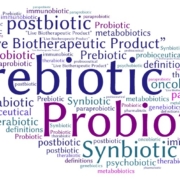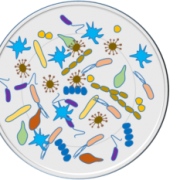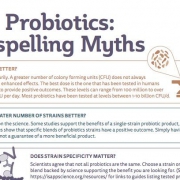A guide to the new FDA Qualified Health Claim for yogurt
Fermented foods such as yogurt, kimchi, and fermented pickles have traditionally been associated with health benefits in countries around the world, but the science that backs these health benefits is relatively new.
Amidst a growing number of scientific studies examining the health benefits of specific fermented foods, a new Food and Drug Administration (FDA) announcement in the US marks an advance in how the potential benefits of fermented foods can be portrayed to the general public.
In response to a petition by Danone North America, the FDA announced that it will allow the first Qualified Health Claim related to a fermented food – yogurt. The new Qualified Health Claim is worded as follows:
Eating yogurt regularly, at least 2 cups (3 servings) per week, may reduce the risk of type 2 diabetes. FDA has concluded there is limited information supporting this claim.
Or Eating yogurt regularly, at least 2 cups (3 servings) per week, may reduce the risk of type 2 diabetes according to limited scientific evidence.
The claim was announced in a letter of enforcement discretion on March 1st, and can be applied to any yogurt product on the US market that meets the FDA’s standards of identity.
Qualified Health Claims and why they’re important
A Qualified Health Claim is a statement that makes a connection between a substance and a disease-related or health-related condition, is supported by scientific evidence, but does not meet the more rigorous “significant scientific agreement” standard required for an Authorized Health Claim.
Currently, approximately one dozen Authorized Health Claims and around 30 Qualified Health Claims exist in the US for different nutritional and food substances. For example, an Authorized Health Claim exists for soluble fiber from whole oats; Qualified Health Claims exist for walnuts, green tea, and a list of other foods.
To ensure that these claims are not misleading, they must be accompanied by a disclaimer or other qualifying language to accurately communicate to consumers the level of scientific evidence supporting the claim.
According to Bob Hutkins, Professor Emeritus at the University of Nebraska-Lincoln, such claims are important when considered within the context of what Americans currently eat.
He says, “We come nowhere close to eating the recommended amounts of fiber, whole grains, and fruits and vegetables. Indeed, according to the USDA Healthy Eating Index, the average consumer scores a 60 on a 100 point scale. When considering our overall eating habits in the US, I don’t know that this one claim will actually move the needle very much. But in my view, health claims, whether ‘Authorized’ or ‘Qualified’, may help nudge consumers to make informed decisions when deciding what to eat.”
The path to Qualified Health Claim
Dr. Miguel Freitas PhD, VP Health and Scientific Affairs at Danone North America, whose team led the petition, says the company’s efforts were motivated by the observation that, over time, evidence supporting the potential of yogurt to reduce the risk of type 2 diabetes grew more and more compelling.
In December 2018, Danone North America first submitted the Qualified Health Claim petition to the FDA. The petition was put on hold during the height of the COVID-19 pandemic and the evidence was reviewed again in 2023 by the FDA.
In total, more than 85 related studies were considered in support of the claim, with 30 being deemed high or moderate quality.
The FDA gave recognition of the claim in March 2024. Dr. Freitas says, “Now that the claim has been announced, our hope is that it will give consumers simple, actionable information they can use to reduce their risk of developing type 2 diabetes through an easily achievable, realistic dietary modification.”
Scientific support
Prof. Hutkins says the FDA has a high bar even for Qualified Health Claims, requiring a substantial level of scientific evidence to support them. He says that regarding this yogurt claim, “The FDA conducted an exhaustive review of studies that were included in the petition. Many of the studies were not considered rigorous enough and were excluded. In my view, they were very conservative in their analysis of the data.”
Both intervention studies and observational studies were considered in the FDA’s evaluation of the evidence linking yogurt and type 2 diabetes. Pro. Hutkins says that while randomized, controlled trials (RCTs) are considered the gold standard, well-conducted observational studies in large human cohorts can be very informative. The latter ended up being the sole basis of the FDA decision.
“The FDA identified 20 relevant intervention studies, but none were considered sufficiently rigorous to draw meaningful conclusions,” he says. “The FDA identified 28 relevant observational studies, which were then critically reviewed. Ultimately they concluded there was sufficient credible data to suggest associations of yogurt consumption on reduced incidence type 2 diabetes.”
The language for Qualified Health Claims includes any relevant qualifications indicated by the evidence. The FDA claim wording does not differentiate between sweetened and unsweetened yogurt products, with the evaluation noting that the beneficial association was observed irrespective of fat or sugar content. Nevertheless, Prof. Hutkins advises paying attention to the overall nutritional profile of different yogurt products, “In my view consumers could gain the benefits of yogurt without the extra calories and refined carbohydrates by choosing unsweetened yogurts.”
Implications for the food industry
Dr. Freitas says, “Our hope is that this new Qualified Health Claim will inspire the food industry as a whole to increase its focus on yogurt innovation and research, to continue unlocking the full extent of its potential benefits.”
Meanwhile, Prof. Hutkins hopes to see more RCTs on yogurt in the future. “It should be possible to design RCTs that would satisfy the FDA,” he says. “I hope funding agencies will agree.”
Prof. Seppo Salminen PhD, from University of Turku (Finland), says this approval may mark the beginning of a trend in developing claims for individual fermented foods. Such is the goal of a European project called Promoting Innovation of ferMENTed fOods (PIMENTO), which acknowledges the high consumer interest in fermented foods and the potential benefits of these foods for nutrition, sustainability, and more. Prof. Salminen points out that yogurt is leading the way, given the new US claim as well as the existing European Union claim regarding yogurt with live cultures and improved lactose digestion.











